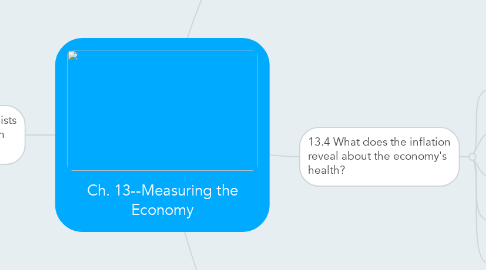Ch. 13--Measuring the Economy
by Jean Charles


1. 13.2 How do Economists measure the size of an economy?
1.1. GDP (Gross Domestic Product) which is the market value of all final goods and services produced within a country during a given period of time.
1.2. Market value determines how much buyers are willing to pay for a good or service in a competitive marketplace.
1.3. They determine how much was produced in a given country's border. Goods and services from other countries wouldn't be counted in measuring the size of that economy.
1.4. Real GPD - measure the output of an economy in constant dollars, which is fixed at a rate that was current in a specified base year.
1.5. Nominal GPD - measure the output of an economy valued at today's prices.
2. 13.3 What does the unemployment rate tell us about the economy's health?
2.1. The Bureau of Labor Statistics (BLS) measure the unemployment rate in the US.
2.2. Four types of unemployment: Frictional, structural, seasonal, and cyclical unemployment.
2.3. High unemployment rate = poor economy health.
2.4. Natural Rate of Unemployment - the percentage of the labor force without work when the economy is at full employment.
2.5. Underground Economy - made up of people who earn income from gambling, drug dealing, and other illegal activities.
2.6. Talks about how the unemployment rate at the moment is at an all time low and it has been for about seven years. It's at a point where companies should be competing aggressively for workers, while wages have stayed so flat. The Federal Reserve is also considering raising interest rates for the first time in nearly a decade.
2.6.1. https://www.washingtonpost.com/news/wonk/wp/2015/09/04/u-s-to-release-data-on-jobs-growth-in-august/
